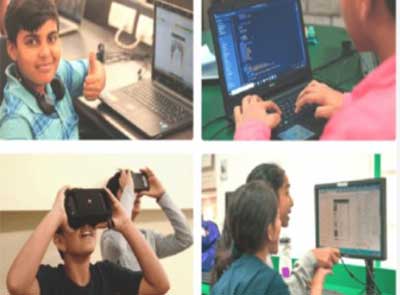Relevance: GS-2 : Issues relating to development and management of Social Sector/Services relating to Health, Education, Human Resources
Key Phrases: E-learning, Inclusive education, Supplementary education, Human Capital, Marginalized communities, Learning losses, Smart classroom.
Why in News?
- The government announced a slew of digital education and digital university focussed initiatives at the Union Budget 2022. With the increasing closure duration of school due to pandemic, an alternative channel to reach rural and poor students can be achieved via e-learning.
Increasing focus on digital education:
- Last year, the Union Budget allotted resources towards Aatmanirbhar Bharat Abhiyan extensively, be it in the social sector, energy, government reforms, migrant workers or agriculture.
- While the National Education Policy was the focus, the education sector saw a budgetary slash of 6 per cent from Rs 99,312 crores to Rs 93.224 crores last year. The overall financial allocation for the education sector for 2022-23 has increased to Rs 1.04 lakh crore from Rs 93,224 crore (BE) in 2021-22 with emphasis on digital modes of education to reverse learning losses caused by the pandemic.
Boost to e-learning in present Budget:
- ‘One Class-One TV Channel’ programme of PM eVIDYA - The number of TV channels will be increased from 12 to 200 TV channels. This will enable all States to provide supplementary education in regional languages for classes 1-12.
- Online Vocational courses - 750 virtual labs in science and mathematics, and 75 skilling e-labs for simulated learning environments will be set-up in 2022-23 to promote critical thinking skills and to give space for creativity.
- High quality e-content will be developed for delivering lessons. Teachers too will be helped with developing e-content.
- Digital university will be established to provide access to
students across the country for world-class quality universal education with
personalized learning experience at their doorsteps.
- The University will be built on a networked hub-spoke model, with the hub building cutting edge ICT expertise and public institutions collaborating as a network of hub-spokes.
- Inclusive education - Students from marginalized communities, weaker sections and rural areas who are mostly studying in government schools were the most impacted during the last two years of the pandemic due to lack of adequate e-learning resources.
Other initiatives taken by government in the past to boost online education:
- Operation Digital Board: To provide smart classrooms facility to all schools with secondary and senior secondary classes
- ‘Shagun’: to improve school education system by creating a junction for all online portals and websites
- National Digital Library of India: To make digital educational resources available to all citizens of the country
- Shodhganga: digital repository for research scholars across Universities and Institutes
Benefits of e-learning:
- Flexibility: Students have the freedom to attend the courses of their choice, can schedule their class time as per their convenience as well.
- Saves money and time: It is a one time capital investment but at the same time, the cost and time to commute reduces heavily and can be utilized for other productive works.
- Access to Expertise: With E-learning the accessibility to top teachers and mentors gets widened. One can also attend the specialized courses as well.
- Learn at your own pace: It provides the opportunity to customize the speed of learning by controlling video speed.
- Documentation: The online database of education gets enriched over time. It is easily accessible and safe at the same time.
Challenges to e-learnings in India:
- Socio-economic Inequity: The affordability of e-learning is limited to the privileged section of society as poor and marginalized sections don't have enough income to spend on the devices to adapt to e-learning.
- Inadequate Internet Penetration Creating Rural-Urban gap: According to National Sample Survey data for 2017-18, only 42% of urban and 15% of rural households had internet access.
- Lack of Practical Learning: Subjects like beauty culture, fashion design and tailoring, travel and tourism, etc need practical learning so it is difficult to teach them from a distance.
- Losing Values of school education: The ethics of sharing, caring, brotherhood and discipline that comes via attending school goes missing in e-learning.
The Covid-19 pandemic has severely affected education and educational systems across all over India. Many public education institutions remained closed in an attempt to reduce the impact of Corona while many private education institutions shifted to online medium. It is about time the government takes robust measures to ramp up public institutions to meet the present need via e-learning and bridge the education gap created by the pandemic. The future of online education looks very promising, and it has wider outreach to a larger section of the population including people in remote areas.
Sources: The Hindu BL
Mains Question:
Q. Covid-19 pandemic has reformed the education sector with increased focus on e-learning. Discuss the advantages and disadvantages of e-learning. [250 words]









